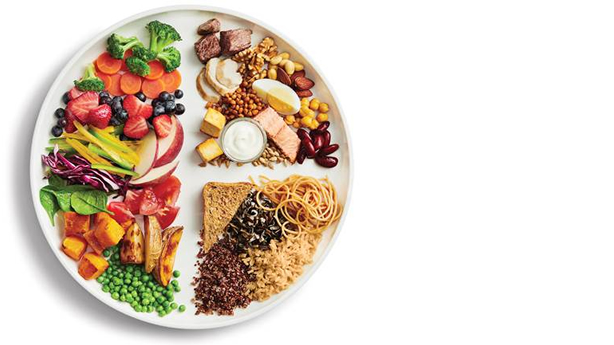Foods that are prepared using the entire grain are called whole grain products. Foods with whole grains have fibre, protein and many nutrients to help you stay healthy and fuller longer.
Fibre
A heart-healthy diet includes foods that are high in fibre. Good sources of fibre can be found mainly in two food groups: grain products, including whole grains such as wild and brown rice and oatmeal, and vegetables and fruit. Protein foods such as beans and lentils also provide a high source of fibre.
Fibre is a vital part of a healthy diet, but most of us are getting less than half the recommended amount. A healthy adult needs 25 to 38 grams a day, but surveys show that the average Canadian daily intake is about 14 grams.
Easy ways to boost fibre intake
The good news is that you don't have to radically alter your diet in order to increase your fibre consumption. Switching from a refined breakfast cereal to a high-fibre one (such as a 100% bran cereal), from white bread to 100% whole-wheat bread with the germ, or from white rice to brown rice, can make a dramatic difference in your fibre intake and your overall health. Canada’s Food Guide recommends that you fill a quarter of your plate with whole grains at every meal. Choose grain products that are lower in fat, sugar and salt.

This image is a copy of the version available at https://food-guide.canada.ca
Fibre is a carbohydrate found in plants. But unlike other carbohydrates, it passes through the body undigested. That means fibre adds zero calories – a bonus if you're trying to manage your weight. Studies show that women who consumed more fibre were half as likely to be obese as those who consumed less fibre. Obesity is a risk factor for heart disease and stroke.
There are two kinds of fibre: soluble and insoluble.
Soluble fibre
Soluble fibre is a soft fibre that may help lower blood cholesterol and control blood sugar levels. The best sources are oatmeal and oat bran, legumes such as dried beans, peas and lentils, and pectin-rich foods such as apples, strawberries and citrus fruit.
Insoluble fibre
Insoluble fibre, or roughage, is bulky. It helps you feel fuller and promotes bowel regularity. It's found in wheat bran, whole-grain foods, and the skins, leaves and seeds of vegetables and fruit.
When eating high-fibre foods, make sure to have plenty of fluids such as water or soups to help your digestive system work better.
Low-fibre foods
Refined foods have had much of the fibre removed. Most products made with white flour are deemed to be refined such as doughnuts, cookies, crackers, white bread, rolls and pasta. That's why eating a slice of white bread, for example, won't satisfy your hunger nearly as much as a slice of 100% whole-wheat bread with the germ.
Shopping for high fibre
When shopping, check food product labels carefully. Look for 100% whole grain or 100% whole wheat with the germ listed at the beginning of the ingredient list, and check the fibre content in the Nutrition Facts table. Products with 2 grams of fibre or more are a healthy choice.
Related information
Find heart-healthy recipes.
Check out our healthy meal planning toolkit.
More healthy eating basics.
